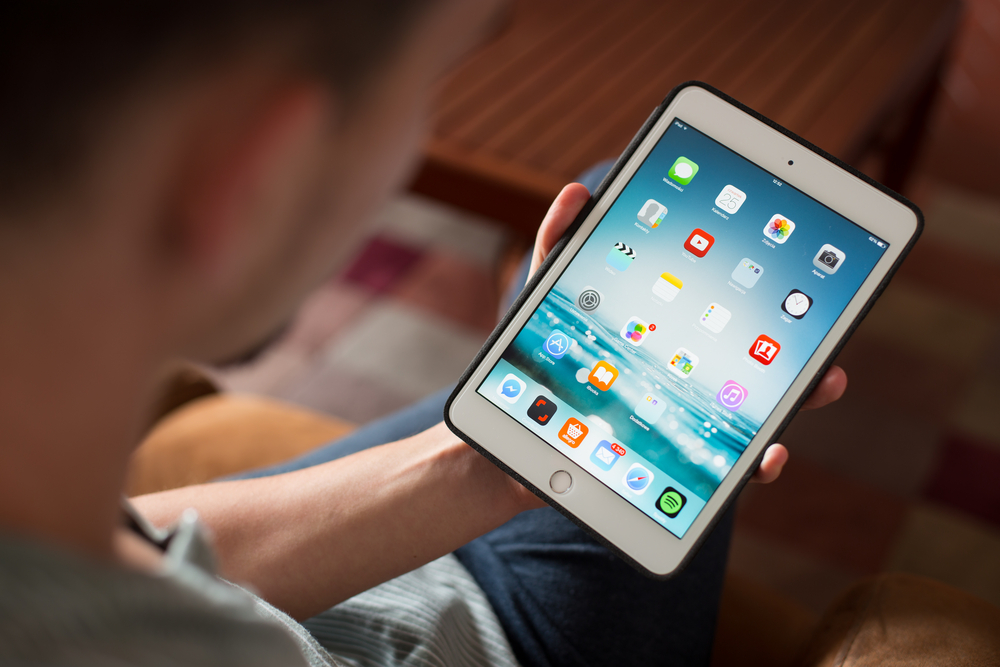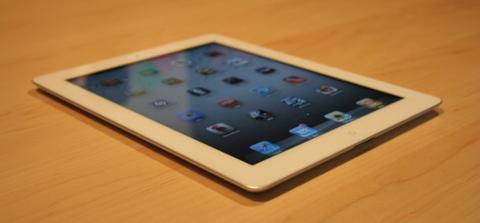 From a hardware perspective, a tablet is a pretty streamlined device, often featuring a touch-screen, volume and power buttons along the bezel, and a port or two. A manufacturer can make the screen larger or smaller, or add a Home button of some sort beneath the screen, but the power and flexibility of a tablet largely hinges on the software and apps it runs. For years, Apple and a handful of Android tablet manufacturers have made billions from the tablet market. When sales flagged, a few of them attempted new twists on the traditional touch-screen form-factor: issuing “mini” tablets, for example, or flexible covers that doubled as keyboards. According to an analyst, however, the next few years could see perhaps the most radical hardware change to tablets since the devices first hit store-shelves. Ming-Chi Kuo, who has a decent record when it comes to predicting Apple’s future moves, issued a report (picked up by MacRumors and other publications) that suggests future iPads will feature flexible screens. “Revolutionary iPad model likely to be introduced in 2018F at the earliest, with radical changes in form factor design & user behavior on adoption of flexible AMOLED panel,” she wrote. “We believe iPad will follow in the footsteps of the iPhone by adopting AMOLED panel in 2018F at the earliest.” Should Apple begin using flexible screens, she added, “We believe the new iPad model will offer new selling points through radical form factor design and user behavior changes, which could benefit shipments.” Samsung is also reportedly working on flexible displays of some sort. The concept isn’t a new one, and it’s easy to see the potential benefits of a screen that can behave more like a piece of paper than a pane of glass. For app developers and others who work in mobile, flexible displays (especially if very flexible) could open up a whole new range of uses—but they’ll have to wait a couple of years for the tech to actually hit the market.
From a hardware perspective, a tablet is a pretty streamlined device, often featuring a touch-screen, volume and power buttons along the bezel, and a port or two. A manufacturer can make the screen larger or smaller, or add a Home button of some sort beneath the screen, but the power and flexibility of a tablet largely hinges on the software and apps it runs. For years, Apple and a handful of Android tablet manufacturers have made billions from the tablet market. When sales flagged, a few of them attempted new twists on the traditional touch-screen form-factor: issuing “mini” tablets, for example, or flexible covers that doubled as keyboards. According to an analyst, however, the next few years could see perhaps the most radical hardware change to tablets since the devices first hit store-shelves. Ming-Chi Kuo, who has a decent record when it comes to predicting Apple’s future moves, issued a report (picked up by MacRumors and other publications) that suggests future iPads will feature flexible screens. “Revolutionary iPad model likely to be introduced in 2018F at the earliest, with radical changes in form factor design & user behavior on adoption of flexible AMOLED panel,” she wrote. “We believe iPad will follow in the footsteps of the iPhone by adopting AMOLED panel in 2018F at the earliest.” Should Apple begin using flexible screens, she added, “We believe the new iPad model will offer new selling points through radical form factor design and user behavior changes, which could benefit shipments.” Samsung is also reportedly working on flexible displays of some sort. The concept isn’t a new one, and it’s easy to see the potential benefits of a screen that can behave more like a piece of paper than a pane of glass. For app developers and others who work in mobile, flexible displays (especially if very flexible) could open up a whole new range of uses—but they’ll have to wait a couple of years for the tech to actually hit the market. Are Flexible Tablets on the Way?
 From a hardware perspective, a tablet is a pretty streamlined device, often featuring a touch-screen, volume and power buttons along the bezel, and a port or two. A manufacturer can make the screen larger or smaller, or add a Home button of some sort beneath the screen, but the power and flexibility of a tablet largely hinges on the software and apps it runs. For years, Apple and a handful of Android tablet manufacturers have made billions from the tablet market. When sales flagged, a few of them attempted new twists on the traditional touch-screen form-factor: issuing “mini” tablets, for example, or flexible covers that doubled as keyboards. According to an analyst, however, the next few years could see perhaps the most radical hardware change to tablets since the devices first hit store-shelves. Ming-Chi Kuo, who has a decent record when it comes to predicting Apple’s future moves, issued a report (picked up by MacRumors and other publications) that suggests future iPads will feature flexible screens. “Revolutionary iPad model likely to be introduced in 2018F at the earliest, with radical changes in form factor design & user behavior on adoption of flexible AMOLED panel,” she wrote. “We believe iPad will follow in the footsteps of the iPhone by adopting AMOLED panel in 2018F at the earliest.” Should Apple begin using flexible screens, she added, “We believe the new iPad model will offer new selling points through radical form factor design and user behavior changes, which could benefit shipments.” Samsung is also reportedly working on flexible displays of some sort. The concept isn’t a new one, and it’s easy to see the potential benefits of a screen that can behave more like a piece of paper than a pane of glass. For app developers and others who work in mobile, flexible displays (especially if very flexible) could open up a whole new range of uses—but they’ll have to wait a couple of years for the tech to actually hit the market.
From a hardware perspective, a tablet is a pretty streamlined device, often featuring a touch-screen, volume and power buttons along the bezel, and a port or two. A manufacturer can make the screen larger or smaller, or add a Home button of some sort beneath the screen, but the power and flexibility of a tablet largely hinges on the software and apps it runs. For years, Apple and a handful of Android tablet manufacturers have made billions from the tablet market. When sales flagged, a few of them attempted new twists on the traditional touch-screen form-factor: issuing “mini” tablets, for example, or flexible covers that doubled as keyboards. According to an analyst, however, the next few years could see perhaps the most radical hardware change to tablets since the devices first hit store-shelves. Ming-Chi Kuo, who has a decent record when it comes to predicting Apple’s future moves, issued a report (picked up by MacRumors and other publications) that suggests future iPads will feature flexible screens. “Revolutionary iPad model likely to be introduced in 2018F at the earliest, with radical changes in form factor design & user behavior on adoption of flexible AMOLED panel,” she wrote. “We believe iPad will follow in the footsteps of the iPhone by adopting AMOLED panel in 2018F at the earliest.” Should Apple begin using flexible screens, she added, “We believe the new iPad model will offer new selling points through radical form factor design and user behavior changes, which could benefit shipments.” Samsung is also reportedly working on flexible displays of some sort. The concept isn’t a new one, and it’s easy to see the potential benefits of a screen that can behave more like a piece of paper than a pane of glass. For app developers and others who work in mobile, flexible displays (especially if very flexible) could open up a whole new range of uses—but they’ll have to wait a couple of years for the tech to actually hit the market. 


